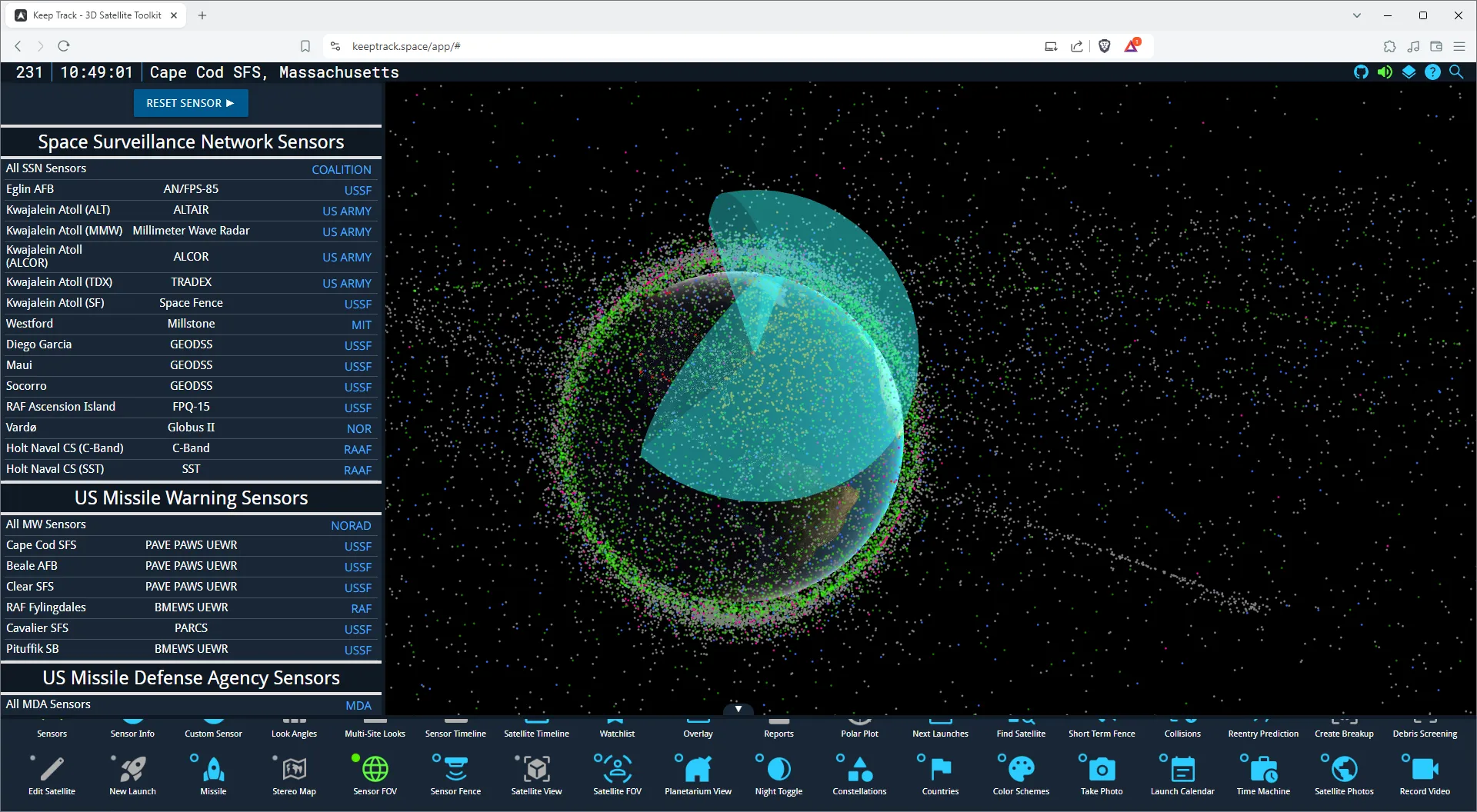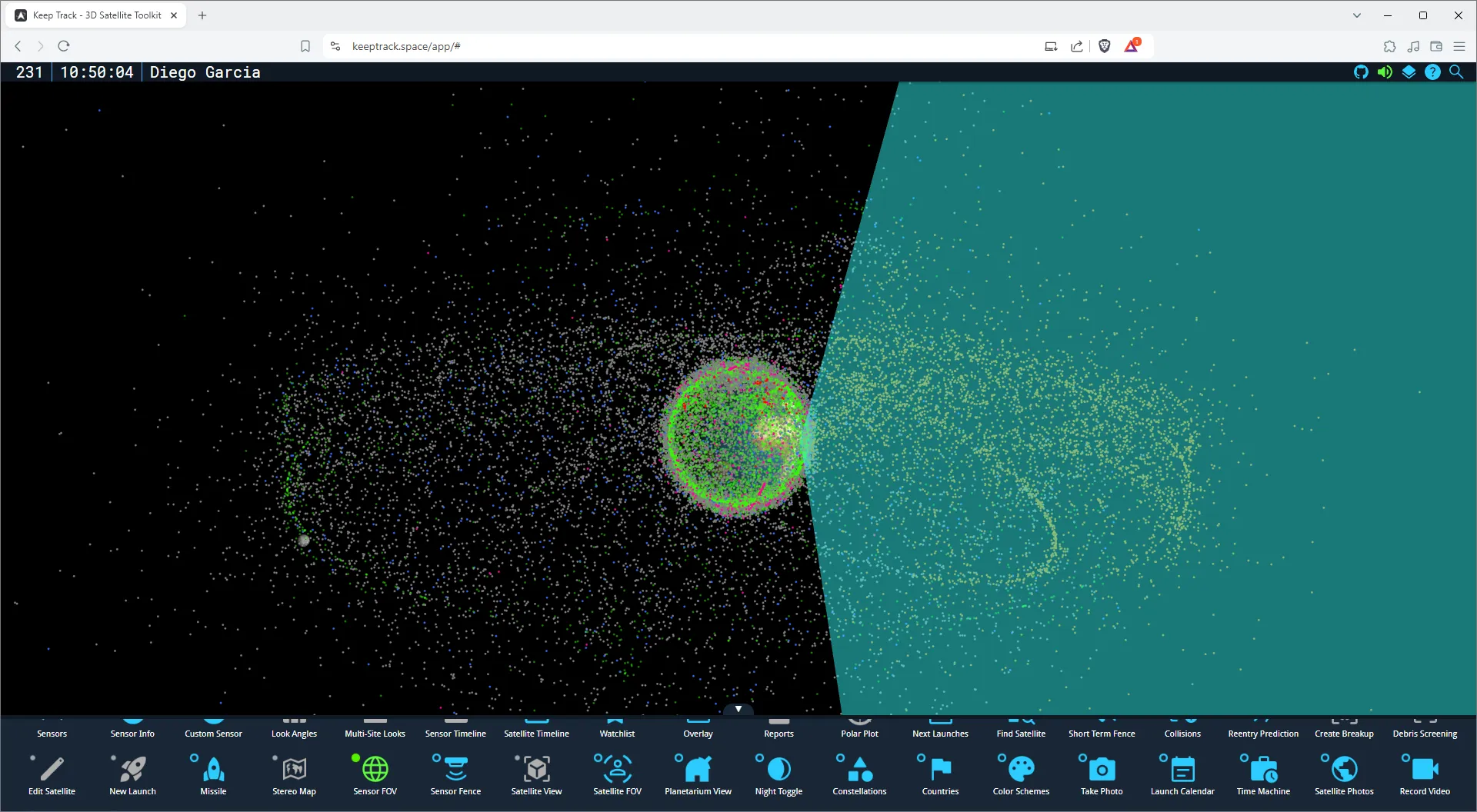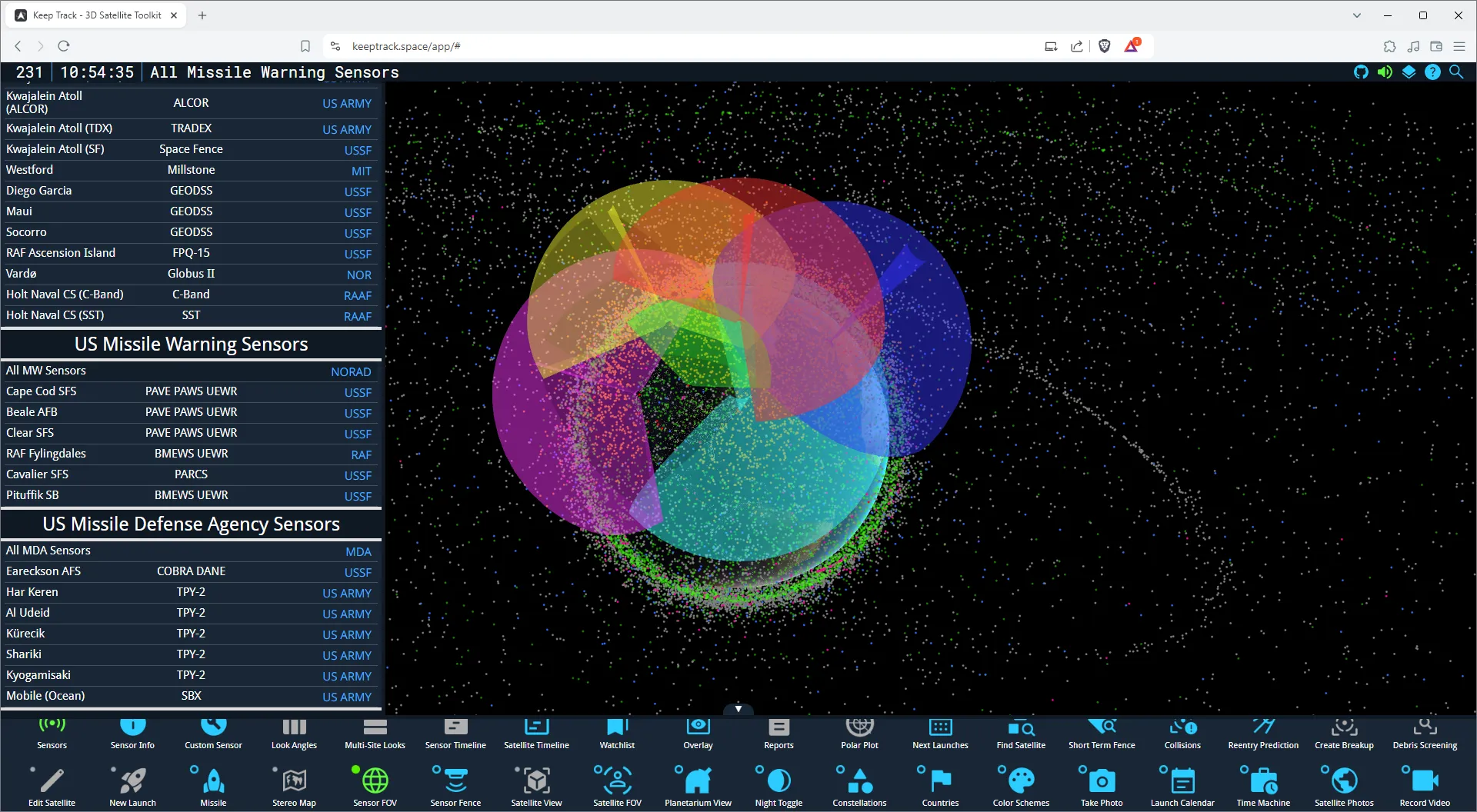Sensors
After learning how to find and track satellites using KeepTrack, it’s important to understand the tools that make this tracking possible: sensors. This overview will introduce you to the various types of sensors used in space situational awareness (SSA) and satellite tracking, their capabilities, and their applications.
Introduction to Space Tracking Sensors
Sensors are the eyes and ears of space situational awareness. They detect, track, and characterize objects orbiting Earth, from active satellites to defunct spacecraft and debris. These sensors come in various forms, each with its own strengths and limitations.
Terrestrial vs. Space-Based Sensors
Sensors for space tracking are primarily divided into two categories:
- Terrestrial Sensors: Located on Earth’s surface or in Earth’s atmosphere.
- Space-Based Sensors: Mounted on satellites or other spacecraft in orbit.
Types of Terrestrial Sensors
Radar Systems
Radar systems are the workhorses of space tracking, especially for objects in Low Earth Orbit (LEO) and Medium Earth Orbit (MEO). They operate by sending out radio waves and analyzing the reflections from objects in space. There are two main types:
- Phased Array Radars: These advanced systems use electronically steered beams, allowing for rapid scanning of large areas of sky. They can track multiple objects simultaneously and quickly switch between different areas of interest.
- Mechanical Radars: These traditional systems use physically moving antennas to scan the sky. While generally less flexible than phased array systems, they can still provide valuable tracking data.

Optical Telescopes
Optical telescopes play a crucial role in tracking objects in higher orbits, including those in Geosynchronous Earth Orbit (GEO). They work by detecting reflected sunlight from objects in space. They are able to view things at substantially greater distances than radar systems, but are only able to record the angular information (no range).
- Ground-Based Electro-Optical Deep Space Surveillance (GEODSS): These systems use large telescopes and sensitive cameras to detect faint objects at great distances.
- Passive Optical Systems: These range from large observatory telescopes to smaller, more numerous systems that can provide wide coverage.

Laser Ranging Systems
Laser ranging systems provide extremely precise distance and velocity measurements for specific objects. They work by sending short pulses of laser light to a target and measuring the time it takes for the reflection to return.
Radio Telescopes
Radio telescopes can detect radio emissions from active satellites or reflect radio signals off objects in space. They’re particularly useful for studying the characteristics of satellites and space debris.
Space-Based Sensors
While the satellites are modeled in KeepTrack, the sensors on those satellites are not. Space-based sensors are becoming increasingly important in SSA:
- Optical Sensors: Cameras and telescopes mounted on satellites can provide continuous monitoring of areas like the GEO belt, free from terrestrial limitations like weather and day/night cycles.
- Space-Based Radar: These systems can provide all-weather, day-and-night tracking of objects in various orbits.
- Space-Based Infrared Systems (SBIRS): These specialized sensors detect infrared emissions, useful for detecting rocket launches and characterizing objects in orbit.
Sensor Networks
Space tracking often relies on networks of sensors to provide comprehensive coverage. Some notable networks include:
- Space Surveillance Network (SSN): Operated by the US military, this network includes both radar and optical sensors distributed globally.
- Missile Warning Network: A subset of the SSN focused on detecting missile launches and tracking ballistic missiles.
- European Space Operations Centre (ESOC): The European Space Agency’s network of sensors for tracking satellites and debris.
- LeoLabs: A private company specializing in tracking objects in Low Earth Orbit using phased array radars.
- MDA Sensors: A network of sensors operated by the Missile Defense Agency for tracking objects in space.
- Russian Sensors: Russia operates a variety of radar and optical sensors for space tracking.

Key Sensor Characteristics
When working with KeepTrack or analyzing real-world space tracking data, it’s important to understand these key sensor characteristics:
- Field of View (FOV): The area of sky a sensor can observe at once. Wide FOV sensors can survey large areas, while narrow FOV sensors often provide more detailed data.
- Sensitivity: This determines the smallest or faintest object a sensor can detect. More sensitive sensors can track smaller pieces of debris.
- Tracking Rate: How fast the sensor can follow a moving object. This is particularly important for tracking fast-moving objects in low orbits.
- Wavelength: The part of the electromagnetic spectrum the sensor operates in. This affects what types of objects and orbits the sensor is best suited to observe.
- Resolution: The level of detail the sensor can distinguish. Higher resolution can provide more accurate position data and potentially characterize the size and shape of objects.
Conclusion
As you continue to use KeepTrack, remember that the satellite positions and orbits you see are the result of complex sensor systems working together. Understanding these sensors and their capabilities can provide valuable context for your satellite tracking activities and help you appreciate the challenges and complexities of space situational awareness.
